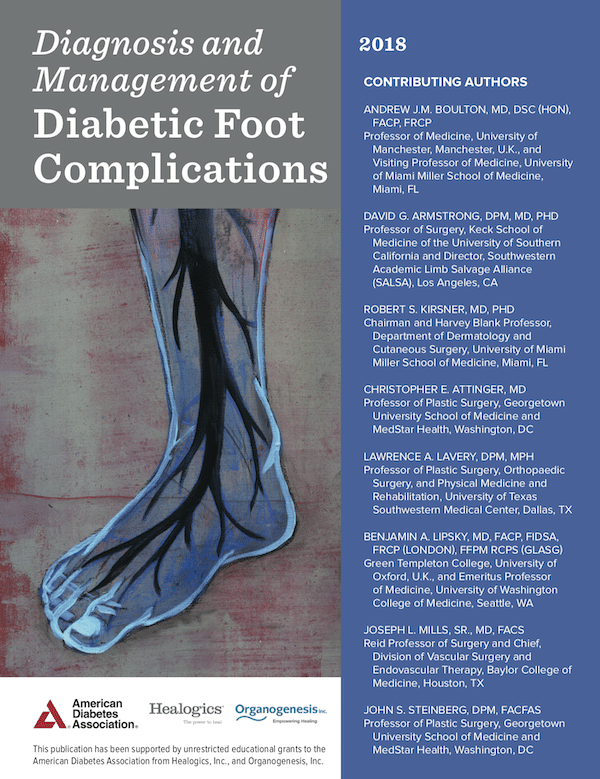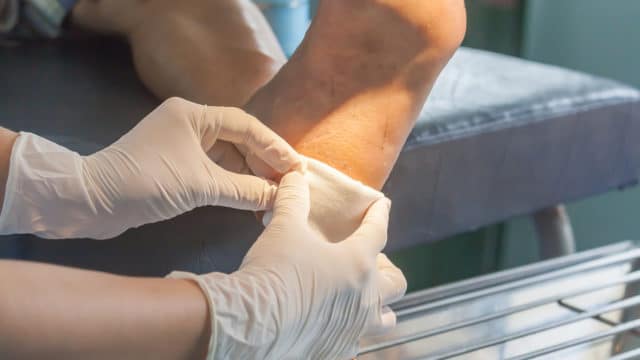Diagnosis and Management of Diabetic Foot Complications
At least half of all amputations occur in people with diabetes, most commonly because of an infected diabetic foot ulcer. A thorough understanding of the causes and management of diabetic foot ulceration is essential to reducing lower-extremity amputation risk. This compendium elucidates the pathways leading to foot ulcers and enumerates multiple contributory risk factors. The authors emphasize the importance of appropriate screening and wound classification and explain when patients should be referred for specialist care, targeted education, or therapeutic shoes or insoles. They provide a comprehensive review of treatment approaches, including devices for foot lesion off-loading and aggressive wound debridement through mechanical, enzymatic, autolytic, biologic, and surgical means. Because infection and peripheral artery disease are key contributors to amputation risk, the authors discuss the diagnosis and management of these conditions in detail. They also review the expanding armamentarium of evidence-based adjunctive treatments for foot ulcers, including growth factors, skin substitutes, stem cells, and other biologics. Because Charcot neuroarthropathy is a serious but frequently missed condition in people with diabetic neuropathy, the authors explain the differential diagnosis of the hot, swollen foot that is a hallmark of this condition. The article ends with an overview of four strategies for maintaining a foot in remission, followed by a brief look at the future of diabetic foot care.




